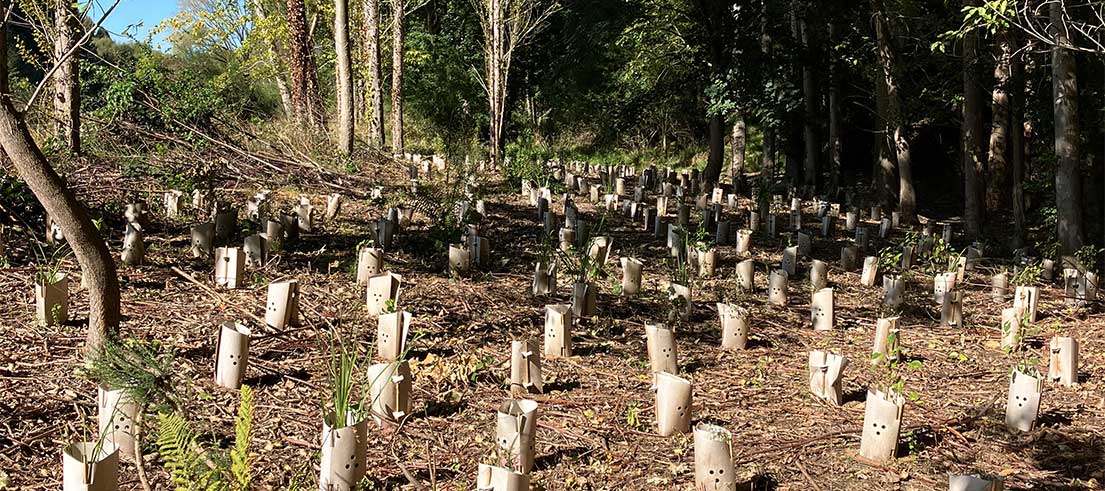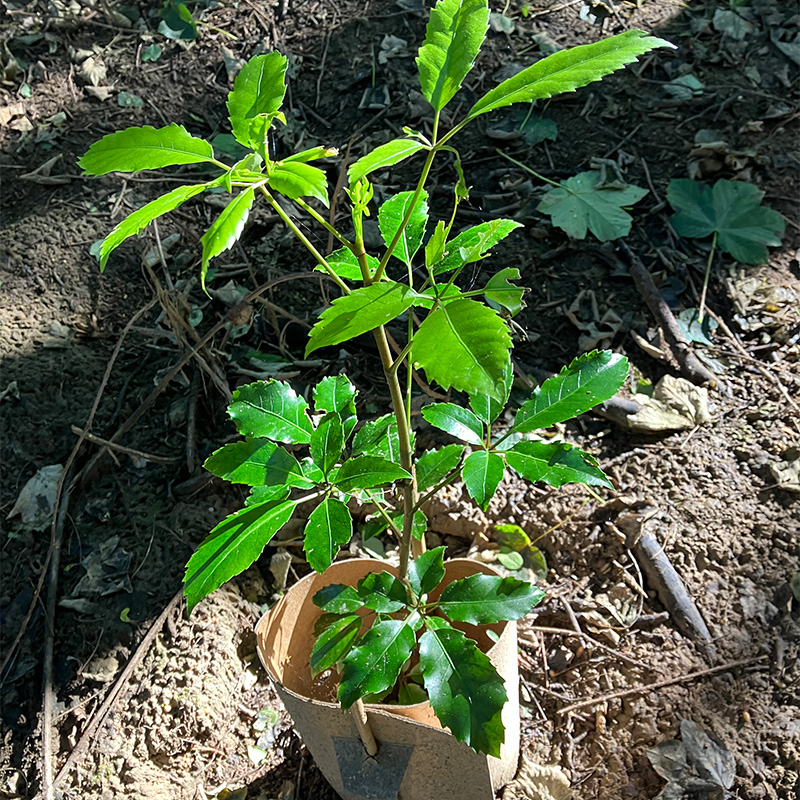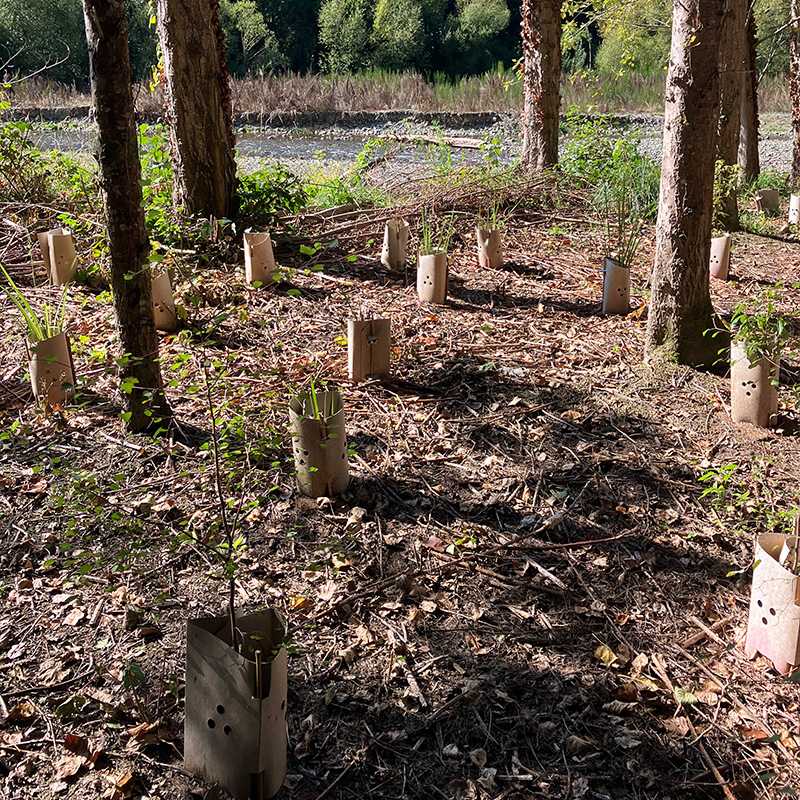
Flood protection work pays off in Geraldine
Winding its way through the centre of Geraldine, the Waihī River offers a strong case for the importance of ongoing flood protection works.
We have four project sites on the section of river that runs through the township — projects that play an essential role in keeping both the people and places here safe, regeneration project supervisor Dani Devine explained.
"When you have a township that has been built right alongside the banks of a river, it's critical that those banks are stable and one way we can do this is to make the vegetation on our banks as sturdy and resilient as we can by facilitating the establishment of native species on our berms," she said.
"This is a place where you need good flood protection."
Heavy weed infestation is a risk for flood protection schemes across Canterbury. Work must be carried out in the active braids to protect against rapidly establishing woody species and in the adjacent bermlands against pest vine and tree weed species.
This is especially true in the Waihī, with willow encroaching the fairway and vast infestations of sycamore (Acer pseudoplatanus), old man's beard (Clematis vitalba), and wild hops (Humuls lupulus) along its length.
The berm transition project
As part of our regionwide berm transition project, we are transforming sites on 23 rivers in Waitaha Canterbury through targeted weeding and enhancement planting.
Targeted weeding means leaving flood protection trees and native flora untouched while eliminating pest plants like old man's beard, sycamore, and grey willow.
You can check out the berm transition project sites through our online map.
Our berm transition project is part-funded by the Ministry of Business, Innovation and Employment Kānoa - Regional Economic Development and Investment Unit (64 per cent), with the remainder co-funded by us through a combination of contributions from partners and operational funding/rates.
A novel approach to the age-old problem of weeds
At our planting sites along the Waihī, a key focus is on installing native evergreens between our exotic flood protection poles.
"Flood protection poles are usually willows and poplars, which are deciduous, meaning they lose their leaves in winter. When the leaves drop, the light-hungry vining weeds such as ivy and old man's beard all take off," Dani said.
Evergreen natives that don't lose their leaves will establish a canopy within just a few years and, when planted just a metre apart, will cut off the light source for those weeds so they can't become established. It will make a significant difference in terms of maintenance in these areas.
While it represents a novel approach to weeds, it is already proving successful. "It seems to be working quite well in terms of growth because it provides good conditions for native plants to grow in. A lot of the sub-canopy plantings are growing significantly faster than those in exposed areas.
"This project is about taking advantage of the canopy we already have and filling in the space within it."
In 2022, we installed 3800 native plants alongside the Waihī through Geraldine. We are currently in the process of securing a contractor to install another 5000 plants this year. This will help to further secure the berm while continuing to support biodiversity.
Weeding makes way for special memorial site
Another berm transition project site on the bank of the Waihī River we have planned for this year has special significance for Geraldine.
We will be working alongside the Geraldine Sculpture Trail Committee to transform an existing walking track on the true left bank (the left bank when looking downstream) between the state highway bridge and Geraldine High School into a special memorial walkway.
"It will be a place where people who have lost their loved ones can go and plant a native plant as a way of remembering them and also somewhere beautiful they will be able to go and spend time," Dani said.
"We will be carrying out some additional weeding work in the next few months that will create the space for this special area and we're very proud to be involved with this project."
The case for permanent central government co-investment
Critical flood protection, biodiversity, and community projects like this have been made possible due to the government's one-off post-COVID shovel-ready funding.
However, significant climate change-induced events across the country have highlighted the urgent need for a step change to the provision of flood risk resilience-improving infrastructure nationwide.
One in seven of New Zealand's residents live in areas that may be affected by floods. Flood protection infrastructure is our first line of defence and ageing structures can no longer meet the levels of service needed to fight the challenge of climate change.
Currently, regional and unitary councils invest about $200 million each year in flood protection schemes. This is estimated to fall short of what is needed by $150 million per annum. Read the call from Te Uru Kahika to the central government for long-term co-investment.
The impact and flooding caused by climate change make it clear that securing a permanent river flood risk resilience-improving infrastructure budget from central government is crucial.
To protect our people and places both now and in the future, the focus needs to move from short-term ad-hoc solutions to long-term infrastructural resilience.


